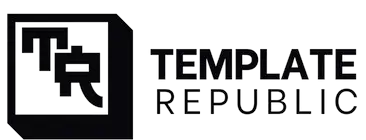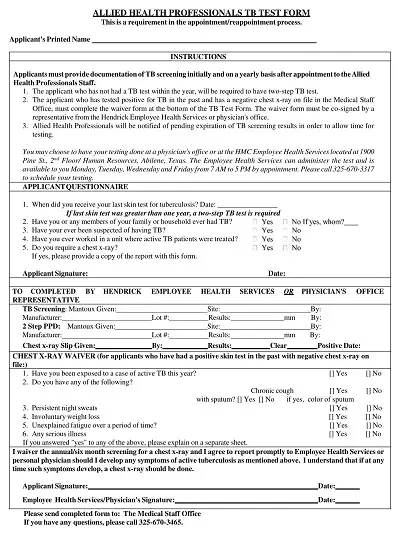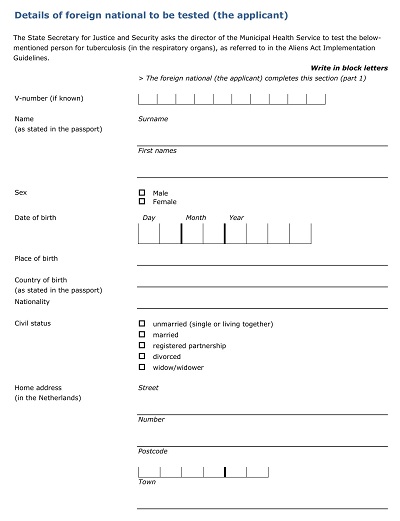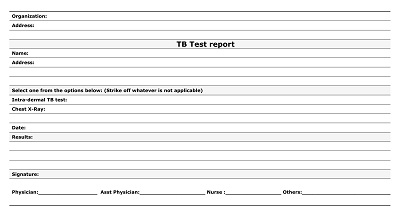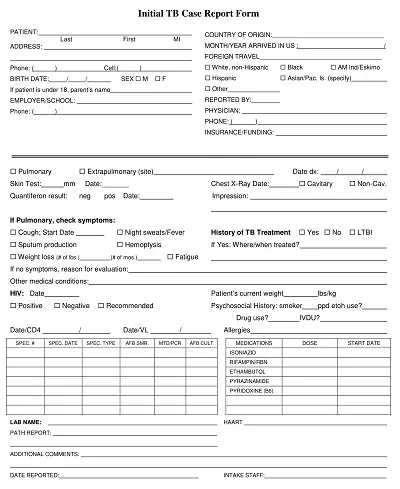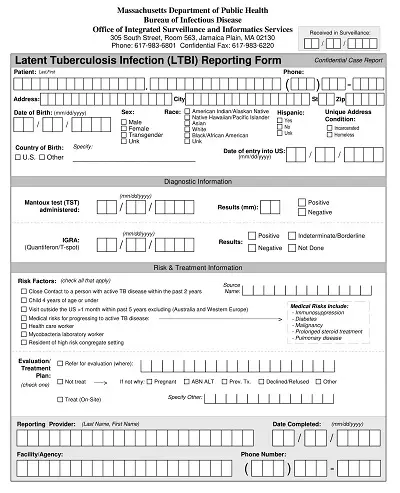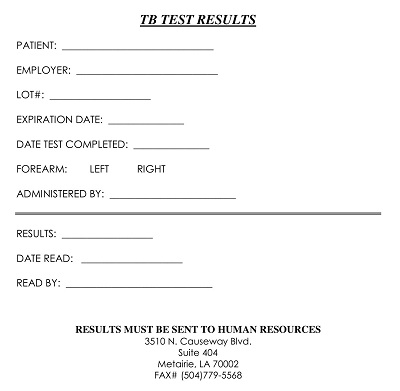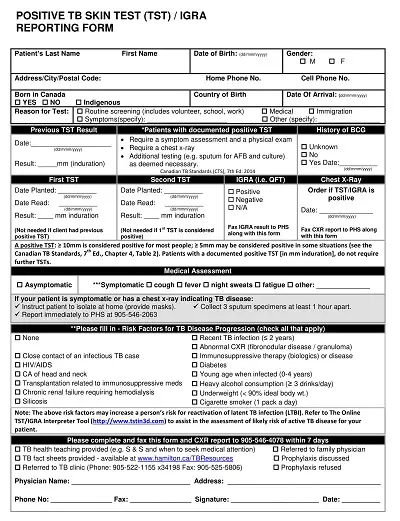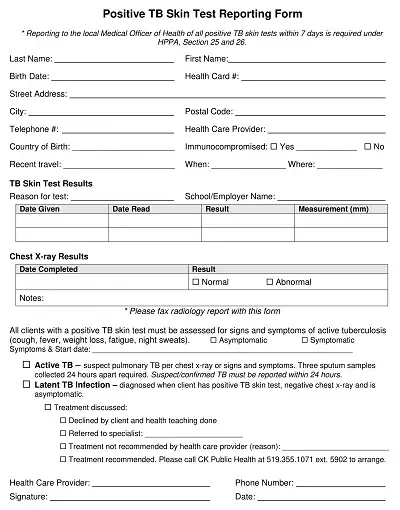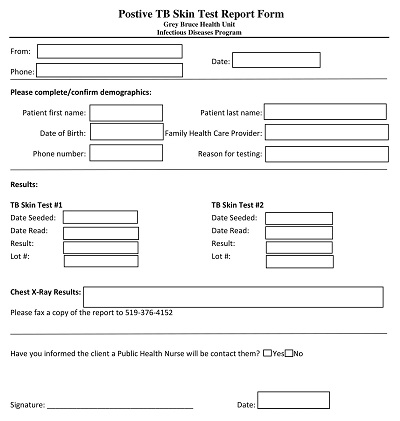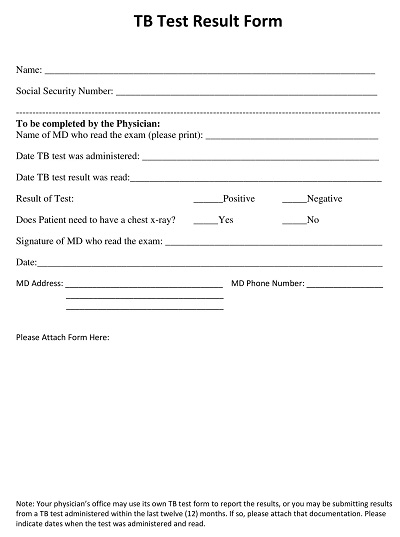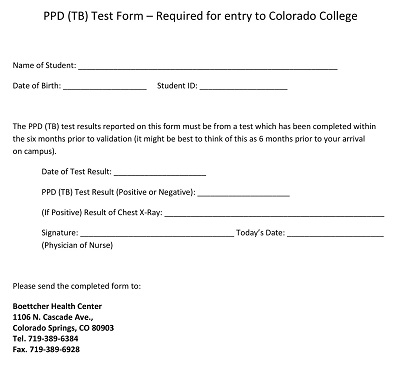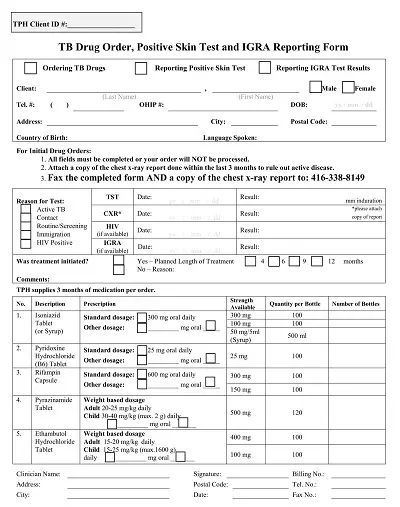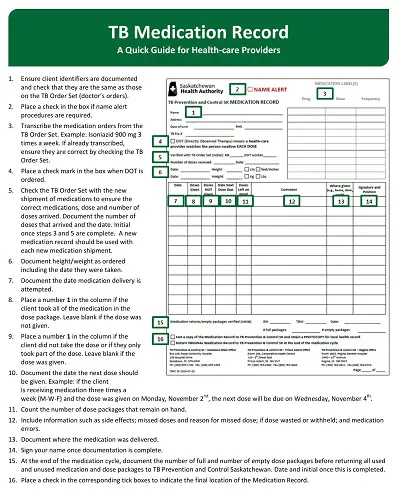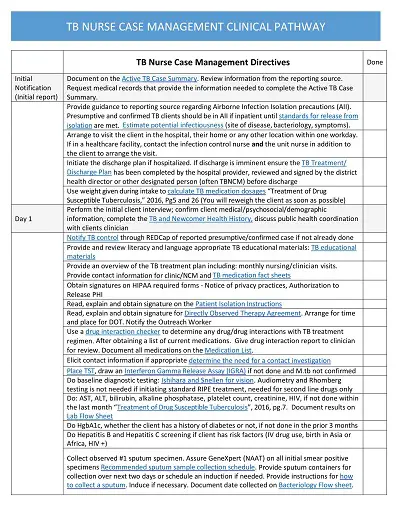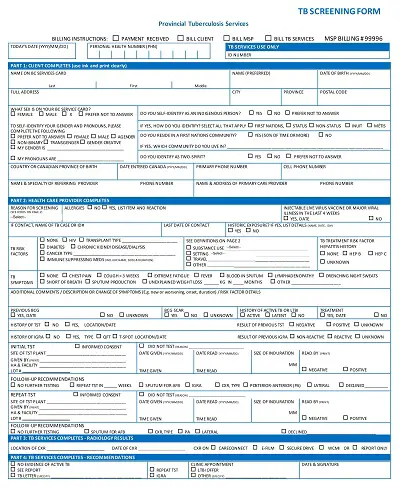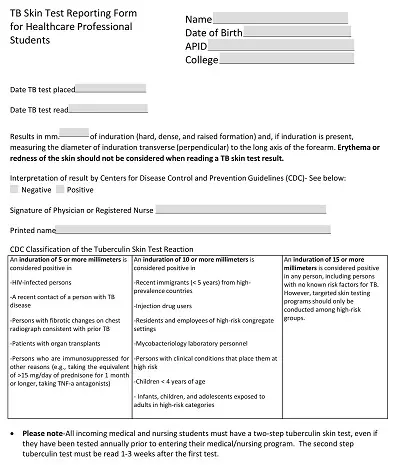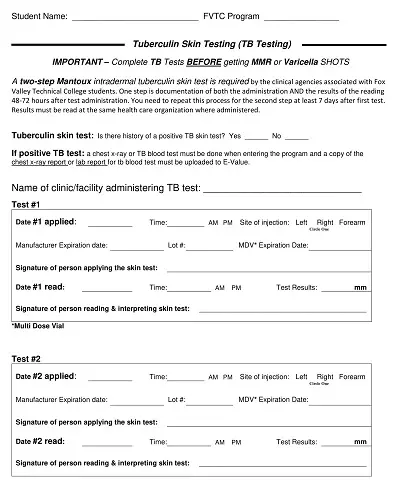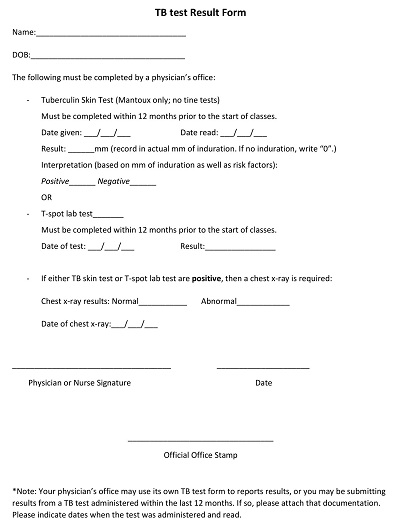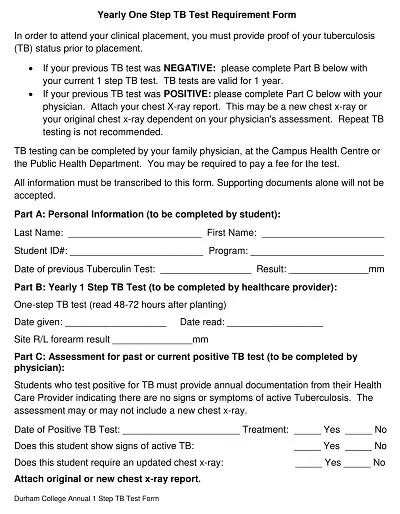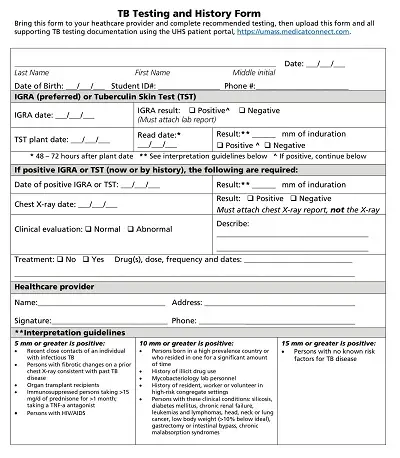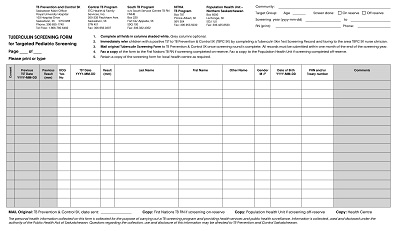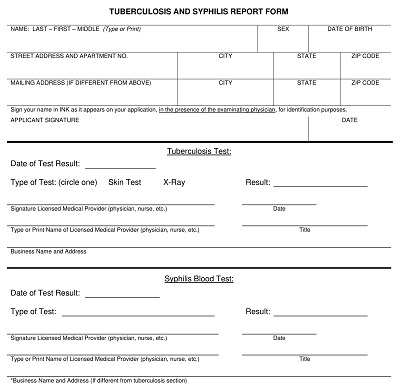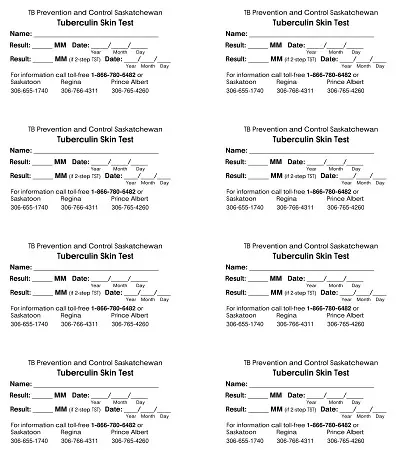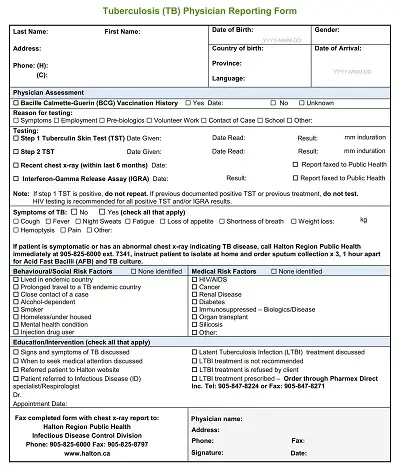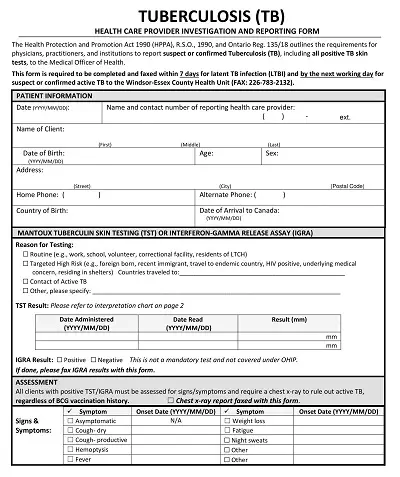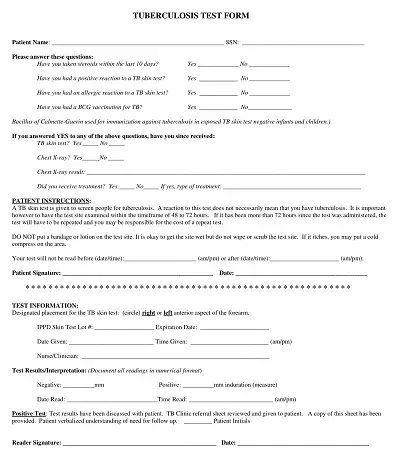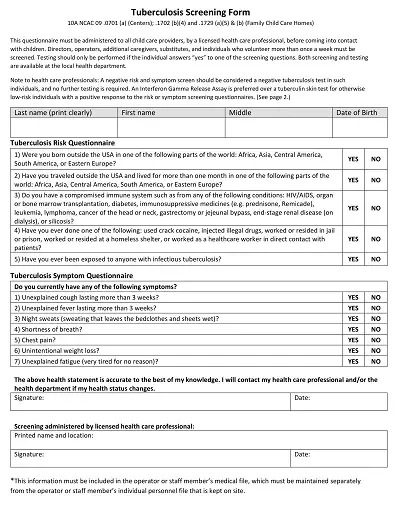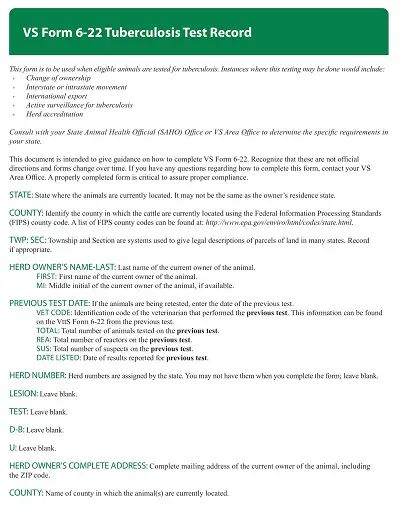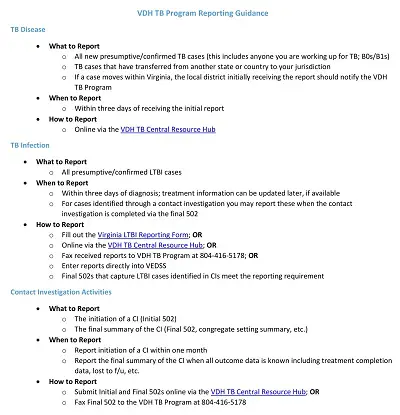40+ Free TB Test Result Form Templates – Printable PDF, Word
Having an organized and comprehensive TB Test Result Form Template is a great way to ensure you stay on top of the health of your workers and those around them. This template can help you quickly fill in the information efficiently and accurately, allowing for quick and easy tracking of test results.
Table of Contents
With it, you can easily capture the essential details with regard to each individual’s test result, such as the name, date is taken, results from the test, whether or not more tests are needed, and other pertinent information. Taking the time to complete a form like this may initially seem daunting. However, doing so will help provide peace of mind for everyone involved that those around them are healthy and safe.
Download Free TB Test Result Form Templates
What is a TB Test Result Form?
A TB Test Result Form is a document used to analyze and record the results of tuberculosis (TB) tests. This form is typically filled out by a healthcare professional or laboratory technician. It includes information on the patient’s health condition, previous TB tests, and any signs or symptoms of the disease that have developed.
It may also include lab findings from further testing such as x-rays or sputum samples. Once all of the necessary information is recorded, the TB Test Result Form is analyzed to confirm whether or not an individual has contracted tuberculosis. By using this document, medical professionals are able to detect and diagnose TB quickly to ensure timely treatment for those affected by the infection.
Types of TB Test Result Forms
Tuberculosis is a contagious disease that can cause serious health complications. Testing is an important part of diagnosing and managing this infection, so it’s important to understand the different types of test result forms used in screening for TB. Here are four common types of TB test results and their associated forms.
Skin Tests
The most common type of TB test is the skin test, also known as the Mantoux or PPD (Purified Protein Derivative) test. For this test, healthcare professionals inject a small amount of bacterial protein under the top layer of skin on your forearm. After 48-72 hours, they check for inflammation or swelling at the injection site. If there is some reaction, it means that you may have been exposed to TB and further testing will be required to confirm the diagnosis. The results are usually documented on a form called a “TB Skin Test Form” or “PPD Reading Form.”
Blood Tests
Blood tests are newer than skin tests and are generally considered more accurate because they measure antibodies in your blood that are produced when you’ve been exposed to certain bacteria in this case, Mycobacterium tuberculosis bacteria which causes TB infection. Blood tests come in two varieties: Interferon-Gamma Release Assays (IGRAs) and Tuberculin Skin Tests (TSTs). Results are often documented on a form called an “IGRA Blood Titer” or “TST Blood Titer” form, depending on which type was used.
Chest X-rays
Chest X-rays can be used to detect active cases of TB if someone has symptoms such as coughing up blood or night sweats. It works by taking pictures of your chest from multiple angles and then looking closely for any signs of disease or infection in your lungs. The results are usually documented on a form called an “X-Ray Report for Respiratory Diseases.”
Sputum Tests
Sputum tests involve collecting samples from mucus coughed up from deep within your lungs while you’re being treated with antibiotics for possible TB infection. A lab technician then examines the samples under a microscope to look for any signs of Mycobacterium tuberculosis bacteria which would indicate an active case of TB infection. Results are typically recorded on forms called either “Sputum Smear Microscopy Reports” or “Mycobacterial Culture Reports.”
Interpreting Your Results
Interpreting your results depends on whether you had a positive or negative skin test, chest x-ray, or sputum culture. A positive skin test indicates that you have been exposed to Mycobacterium tuberculosis (the bacteria that causes TB).
If this is the case, it does not necessarily mean that you have an active infection, it simply means that there has been some exposure in the past. If this is the case, further testing may be necessary to determine if you have an active infection. On the other hand, if you have a negative skin test, chest x-ray, or sputum culture then it means that there is no evidence of an active infection at this time.
Benefits of Using a TB Test Result Form
TB test result forms are a great way to ensure that everyone gets tested for tuberculosis in an efficient and responsible manner. By using a standardized form, it is easy to follow best practices for testing and recording results. Additionally, these forms make it possible to easily compare test results from different individuals or groups of people.
The resulting data can be used to accurately assess the current TB situation within a particular area or patient population. Consequently, TB test result forms are essential for effectively managing the spread of tuberculosis and providing good healthcare outcomes for those at risk of developing this dangerous disease.
How to create a TB Test Result Form Template
TB testing is an important part of diagnosing a patient with TB. It is necessary for healthcare workers to have a standardized and organized system for collecting and documenting this information. Here is how to create a TB test result form template that can be used by medical staff when administering the test.
Form Design Basics
When designing the form, it’s important to make sure it is easy to read and understand. The layout should be clear and concise, with fields that are labeled clearly so it’s easy to identify what they refer to. Additionally, you want to make sure that all of the necessary information can be collected in one place without having to search through multiple documents or forms.
Include All Relevant Fields
The form should include all relevant fields for collecting the patient’s information such as name, date of birth, address, phone number, etc. In addition, there should also be a section for recording the results of the TB test including positive/negative results, date administered, date results were received, etc. Finally, there should be space provided for any additional comments or notes regarding the patient or their results.
Nowadays there are many programs available on the market which allow users to easily create custom forms with drag-and-drop tools and pre-made templates that can be customized according to your specific needs. If you prefer not to build your own form from scratch then these programs can help you save time and energy while still creating an efficient document.
